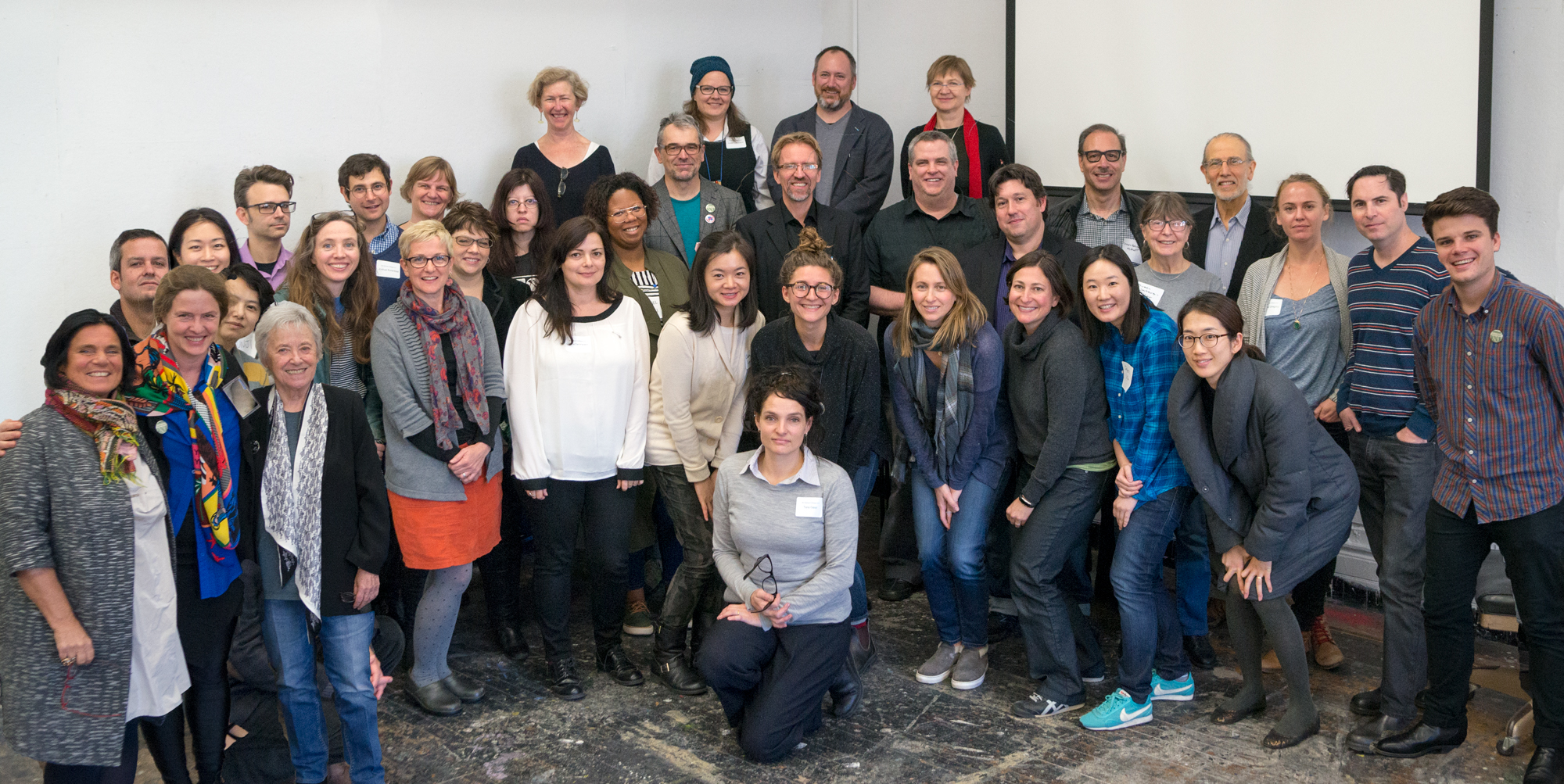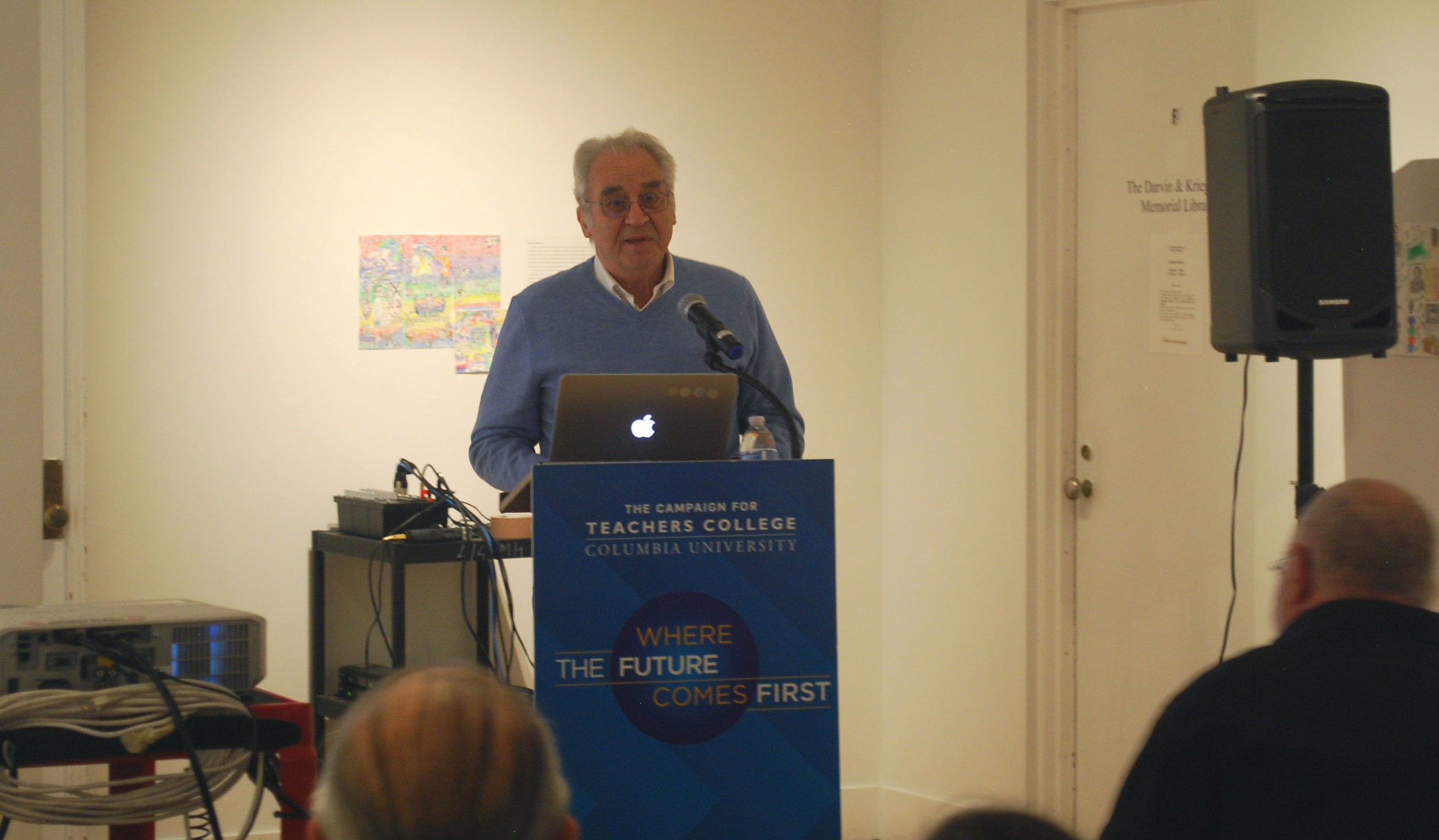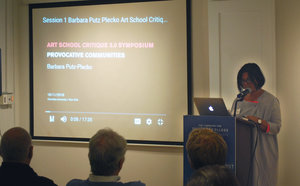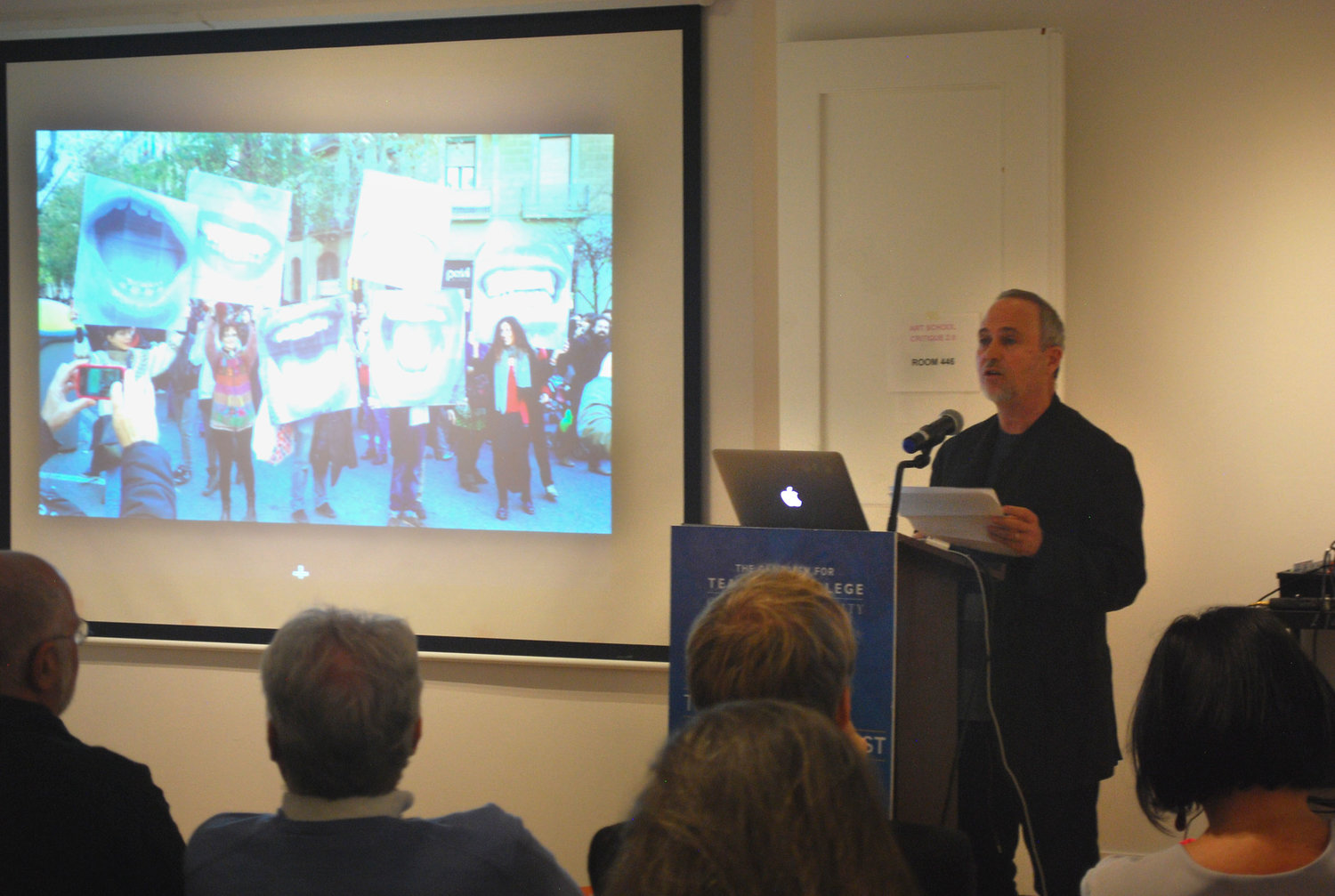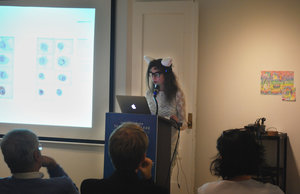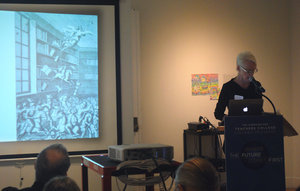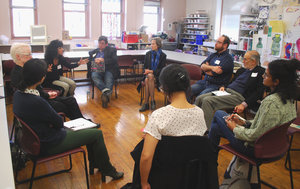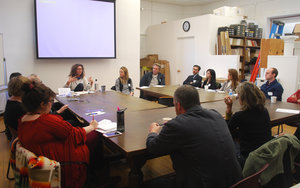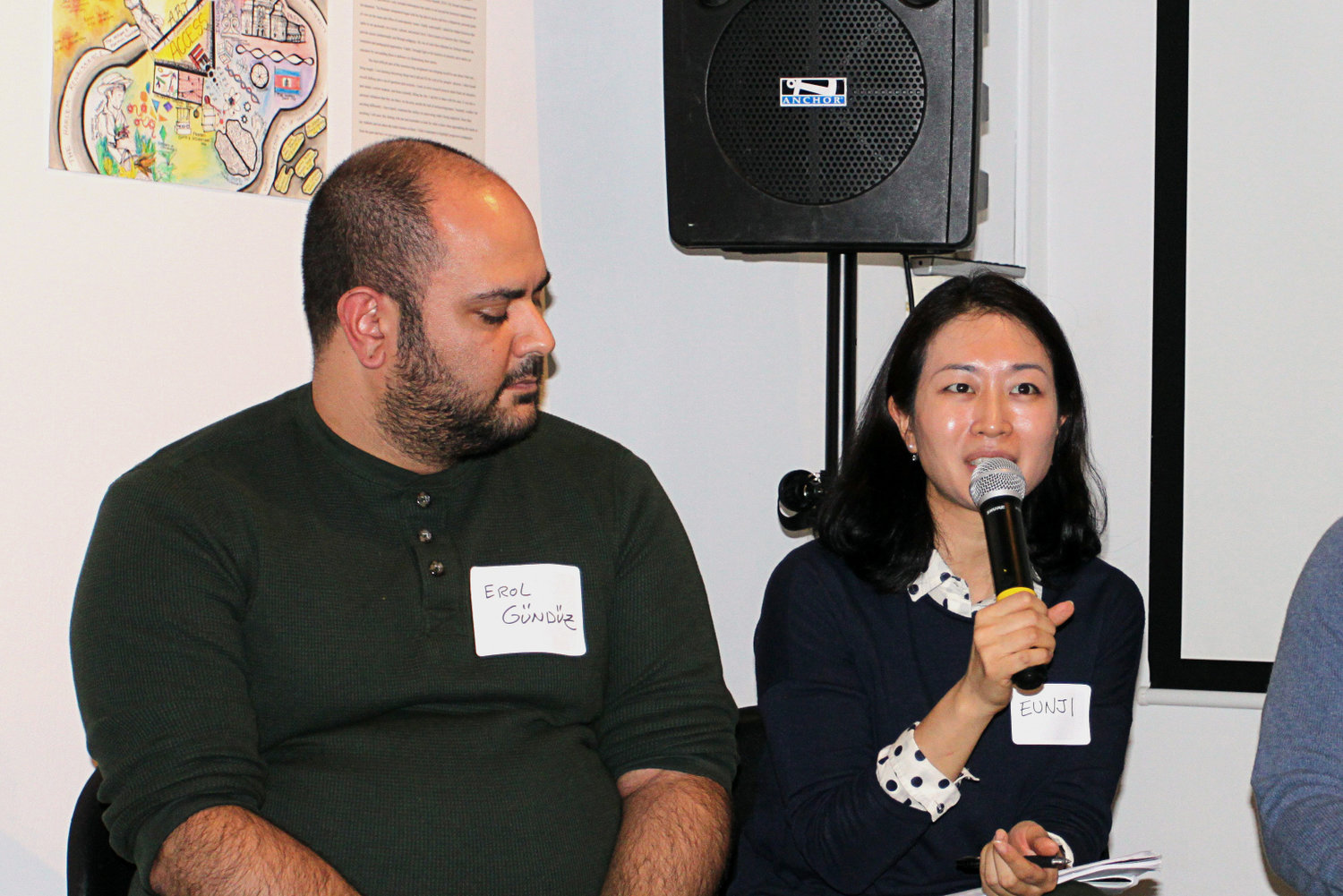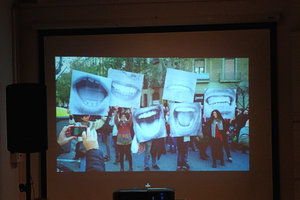Dates: Nov 18-19, 2016
A symposium on higher art education to address critique in collaborative learning environments, including sessions on art-as-
critique, critique-as-collaboration, and critique-as-pedagogy. More information visit: tc.columbia.edu/critique20 or download the program here.
Critiques - the presentation and review of student work in front of a teacher or critic and peers - have long been a common and powerful learning tool in the arts. Apart from allowing a deep engagement with the produced work, they also serve as a unique assessment device. Critiques provide a rich learning experience but can also be jarring. With art schools redefining their roles in the larger context of academia, are critiques still necessary? How have the recent changes to the learning landscape— student-centered teaching models, collaborative ways of making and online classrooms—changed the nature and practice of critiques?
Art School. Critique 2.0 was a multi-faceted exchange of ideas with short presentations, panels, and workshops; it explored multiple aspects of critique: its affordances and shortcomings; the artist as critic; and the role of critique in the curriculum. The symposium is the third in a series of recent symposia on teaching and learning of studio art in the 21st century. Acknowledging the need for professional development of artist- teachers, we emphasized conversations rather than lectures, following an understanding of pedagogy as a practical concern rather than an institutional concept.
Guiding Questions:
What makes critique a powerful instrument for students in the arts, architecture, and design? How can the critique format serve as a model for other areas of education and public discourse? What does critique look like in an environment that places student needs at its center? Is there an art to critique and, if so, what does it look like? What is the role of critique in an art curriculum today? In which way do hybrid practices, online learning and the professionalization of education change “critique”? In what way can art itself be a critical practice? How do we evaluate student work in an environment that is built on collaboration?
Session 1 · Friday, November 18, 2016, Theme: Art as Critique
If artists are not just makers of artifacts but also makers of culture, what broader social issues do they address? What does artistry mean in light of expanded practice, pervasive technology, and diminishing boundaries between art and public design? What are the values that guide their practice? In which way can art be understood as a critical practice? This session encourages artists to reflect on the role of their work as it contributes to culture, society, and education.
Session 2 · Friday, November 18, 2016, Theme: Critique as Collaboration
How does critique fit into a student-centered learning environment? How is critique being incorporated into art making that has become hybrid and relies on collaboration? What is the role of the teacher in a critique? Critique has a rich history in the education of artists, writers, musicians, architects and designers. What can we learn from how critiques are conducted in other disciplines? This session will situate critique as a form of community and relationship building. Contributions should respond to the role of critique as a means of collaboration. A student panel will encourage the participants to rethink pedagogy in light of hybrid practices and of a learning landscape that emphasizes shared expertise and team effort.
Session 3 · Saturday, November 19, 2016. Theme: Critique as Pedagogy
This session will be dedicated to the guiding principles of studio and classroom instruction. What are some of the teaching philosophies that art-educators utilize? How are they put into practice? How can critiques honor both process and outcome? And how do they connect to the curriculum at large?
The symposium is organized by the Art and Art Education program at Teachers College, Columbia University in conjunction with the University of Applied Arts, Vienna, Austria. It took place at Macy Gallery, Teachers College, New York, from November 18 to November 19, 2016. The symposium format included short presentations, panels, and workshops to provoke conversation. Student voices were an integral part of the symposium so as to provide a deeper understanding of their needs and expectations for learning and teaching in the arts.
A publication of proceedings coming out of the symposium is planned for 2017.
Organizer and CTC Coordinator
Richard Jochum
Program Director
Judith M. Burton


